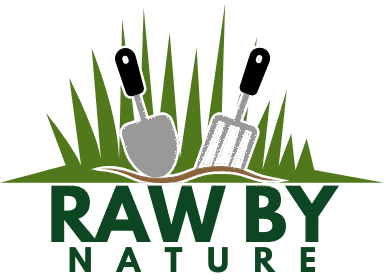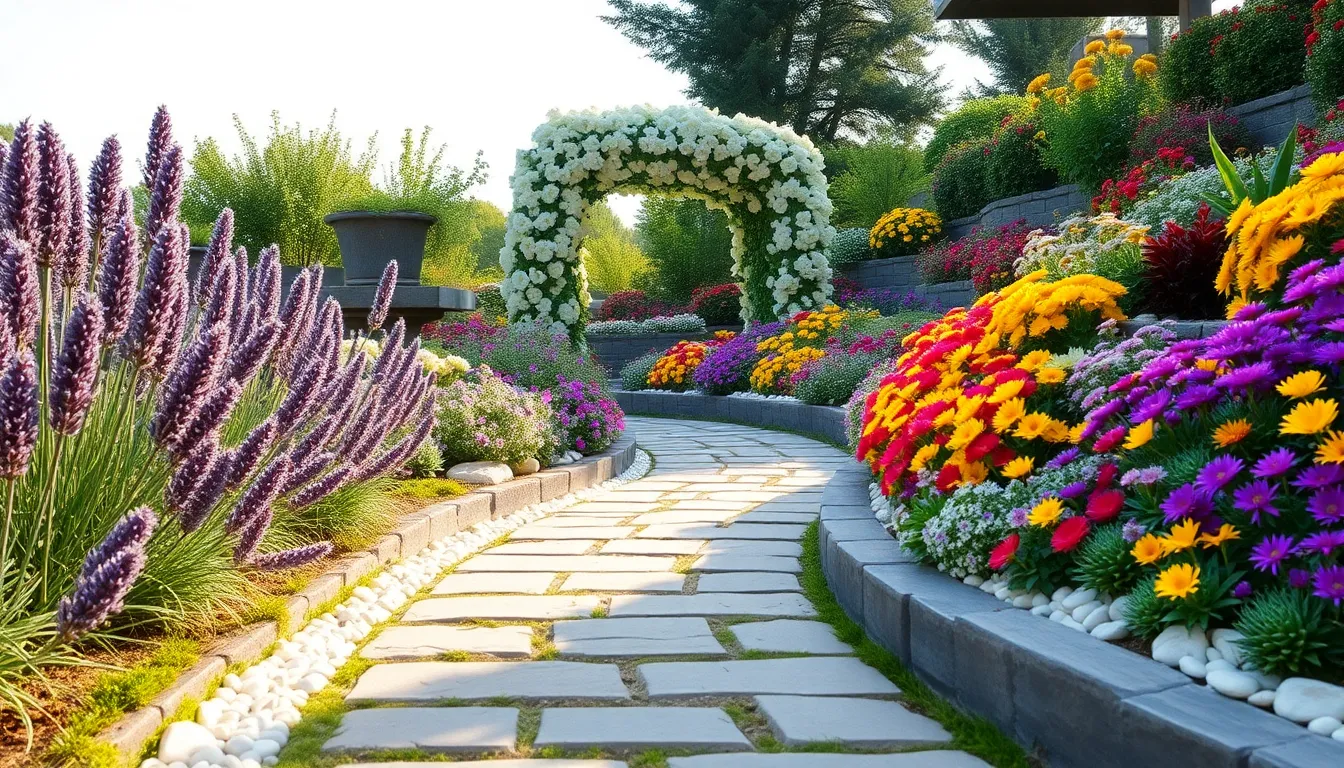Imagine stepping into your backyard and being greeted by a vibrant tapestry of colors, textures, and fragrances—a personal oasis that you’ve crafted with your own hands. Whether you’re just beginning your gardening journey or have spent years nurturing your green thumb, “Beautiful Flower Garden Layout Ideas” is your gateway to transforming any patch of earth into a blooming paradise.
In this guide, you’ll find a treasure trove of design inspirations that cater to both novice and seasoned gardeners, offering layouts that are as practical as they are stunning. By exploring these ideas, you’ll not only enhance the visual appeal of your garden but also learn techniques that promise to simplify maintenance and maximize blooms, leaving you more time to bask in the beauty of your creation.
Choose Complementary Color Schemes
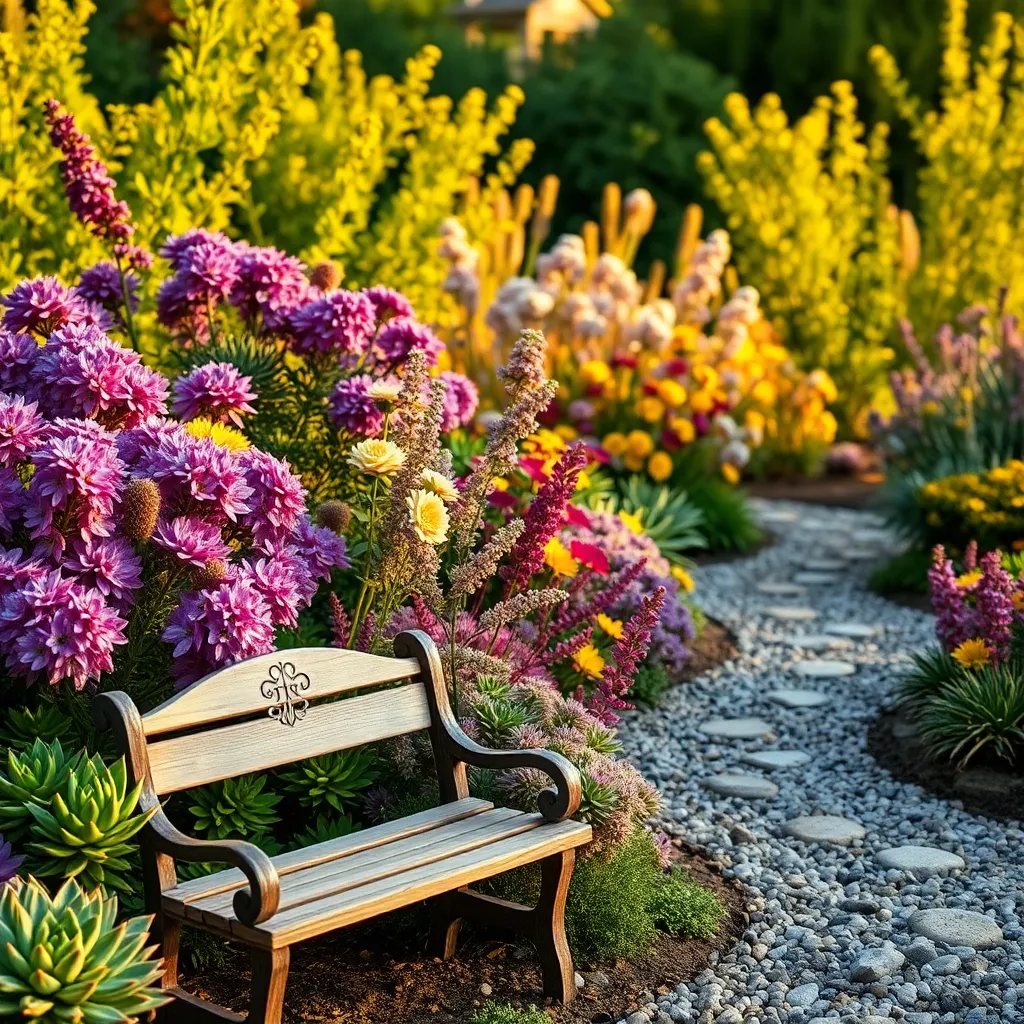
Choosing complementary color schemes for your flower garden can create a visually stunning landscape. Begin by selecting a color wheel to understand how colors work together, focusing on hues that are opposite each other for a dynamic effect.
Consider planting purple and yellow flowers together for a striking contrast, such as lavender and sunflowers. These plants not only complement each other visually but also thrive in well-drained soil with full sun exposure, making them easier to care for.
For a more subtle and soothing palette, select colors adjacent to each other on the color wheel, like blues and purples. Pairing delphiniums with irises can be effective, as both prefer slightly acidic soil and moderate watering to achieve lush blooms.
Experimenting with color combinations can lead to exciting results in your garden. Don’t hesitate to mix in whites and greens, such as white daisies or ferns, which can act as neutral buffers and enhance the vibrancy of your chosen colors.
Create Layers with Varied Heights
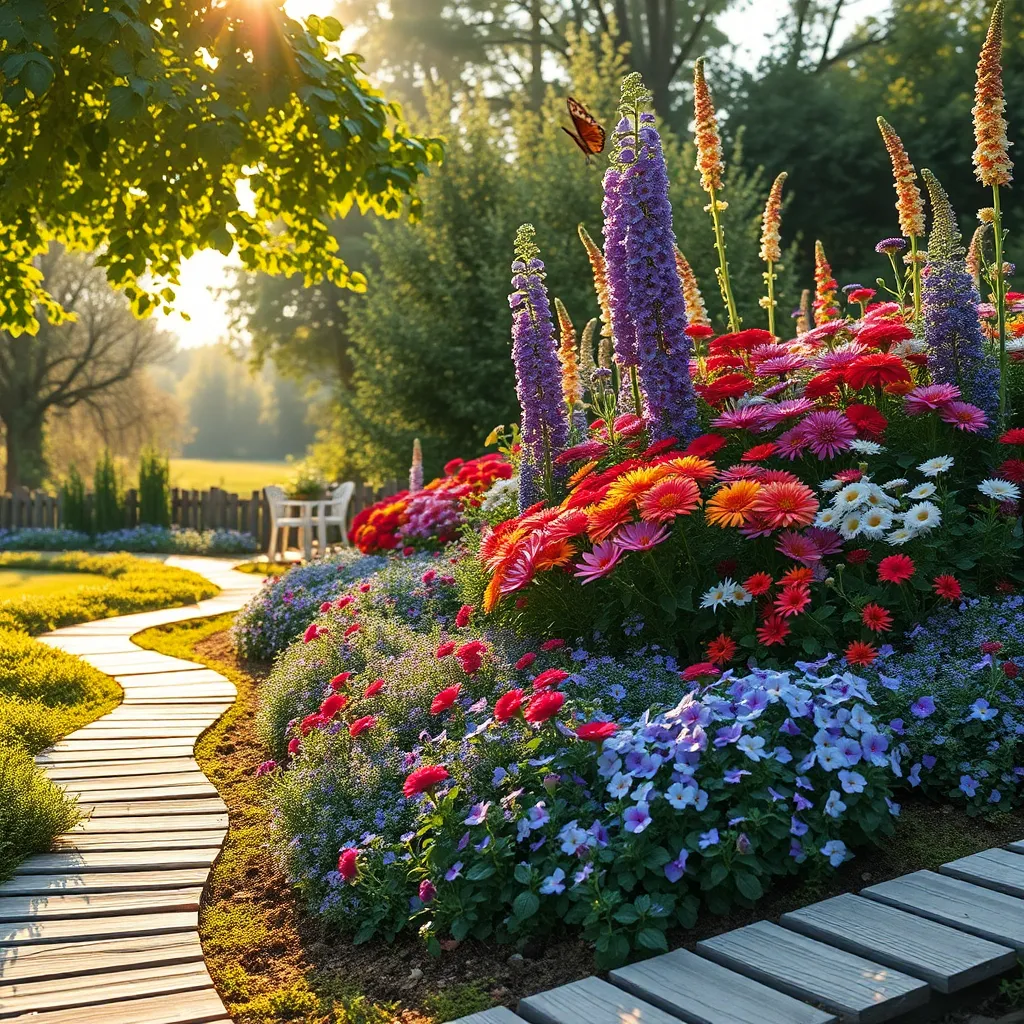
Creating layers with varied heights in your flower garden can add depth and visual interest. Start by selecting plants with different mature heights, from tall perennials to low-growing ground covers.
Consider using tall plants like delphiniums or hollyhocks at the back of your garden beds. These can serve as a lush backdrop and provide a sense of enclosure.
In the middle layer, opt for medium-height plants such as echinacea or daylilies. These plants thrive in well-drained soil and require moderate watering, making them a practical choice for most gardens.
For the front of your beds, choose low-growing plants like creeping thyme or alyssum. These ground covers spread easily, helping to suppress weeds while adding a carpet of color.
Incorporate Curved Pathways
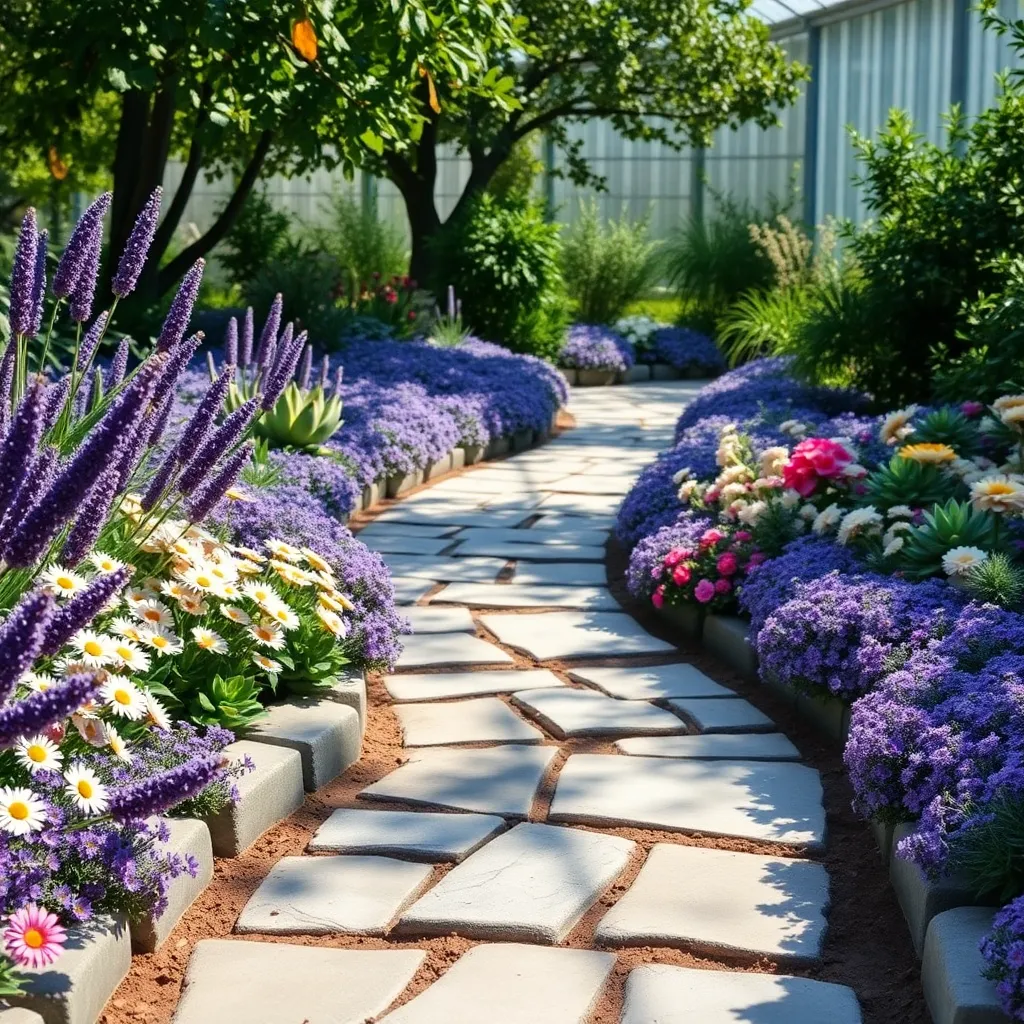
Curved pathways can transform your flower garden into a serene oasis, guiding visitors on a meandering journey through your blooms. They offer a practical way to divide garden spaces and create visual interest, enhancing the overall garden design.
Choosing materials for your pathways is crucial; options like gravel, brick, or stone can blend seamlessly with the natural surroundings. Gravel is affordable and provides excellent drainage, while brick and stone offer a more permanent, durable solution that can withstand various weather conditions.
When planning your curved pathways, consider the placement of your plants to maximize visual appeal. Plant taller species like delphiniums or sunflowers near the edges to create a natural frame and guide the eye along the path.
For a lush, inviting look, incorporate low-growing plants like creeping thyme or sedum along the pathway’s edge. These plants not only soften the path’s lines but also offer a delightful fragrance when brushed against.
Use Focal Point Flowers
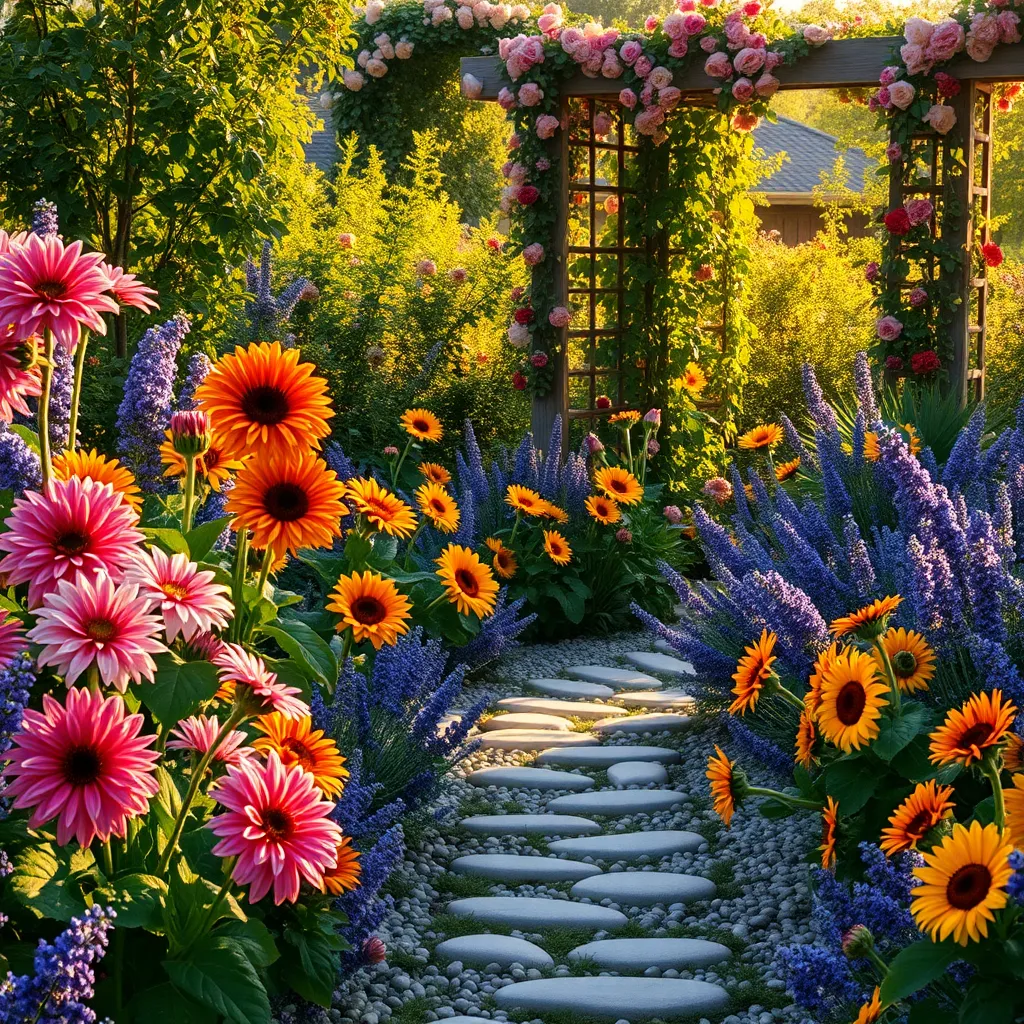
Creating a visually stunning flower garden can be achieved by strategically using focal point flowers. These are the plants that draw the eye and can provide a sense of structure to your garden layout.
Choose flowers that have a unique color, size, or shape to serve as focal points, such as the vibrant peony or dramatic delphinium. To ensure they thrive, plant them in areas with well-draining soil and provide adequate sunlight, typically six to eight hours daily.
Incorporate focal point flowers by planting them in groups of three or five, which creates an eye-catching display. Regular watering and mulching will help maintain soil moisture, especially during dry spells, ensuring these standout plants remain healthy and vibrant.
For more advanced gardeners, consider layering focal point flowers with varying heights to add depth to your garden. This technique not only enhances visual interest but also supports biodiversity by attracting different pollinators.
Plant Seasonal Blooming Varieties
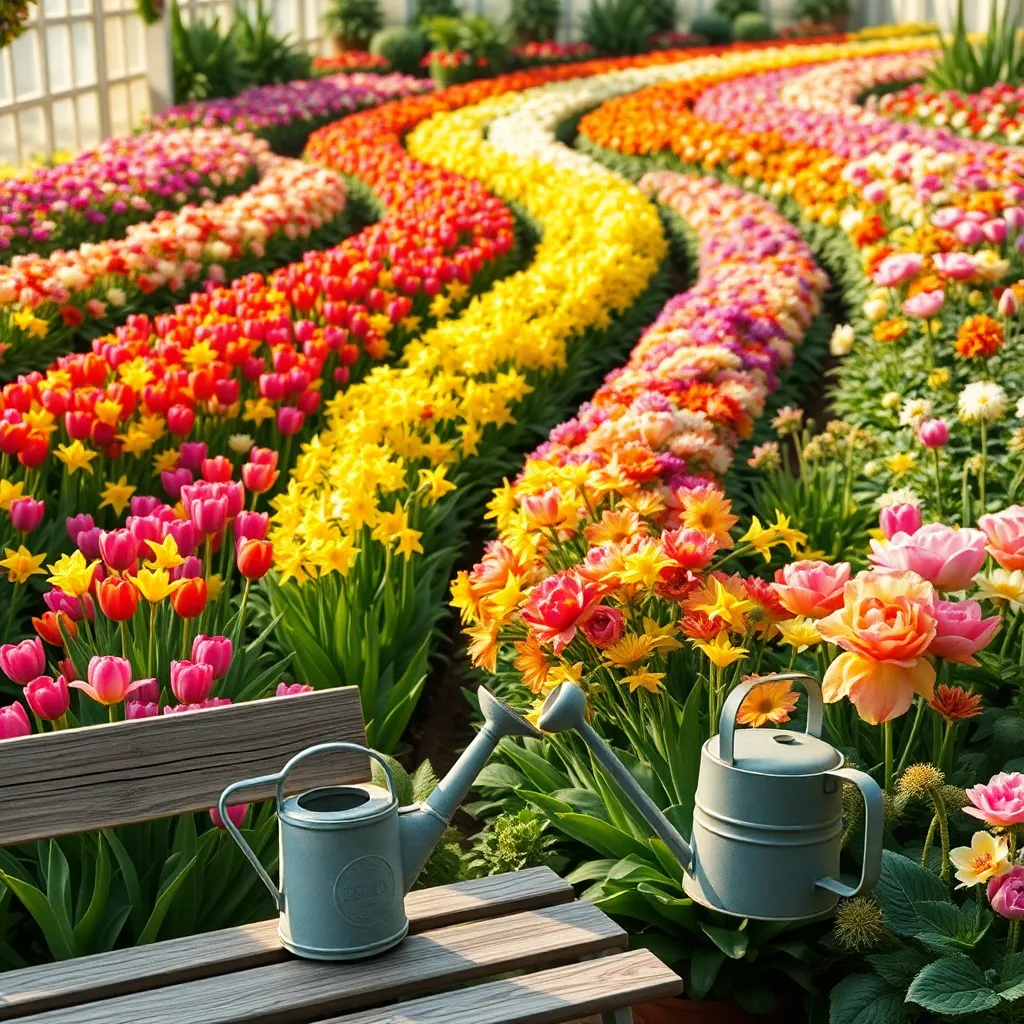
Planting seasonal blooming varieties can significantly enhance the beauty of your garden throughout the year. It is essential to choose plants that thrive in your climate, ensuring they receive the appropriate amount of sunlight and water.
For a vibrant spring display, consider planting tulips and daffodils, which require well-drained soil and full sun. Water these bulbs sparingly as they establish roots, ensuring the soil remains moist but not waterlogged.
Summer gardens benefit from the addition of zinnias and marigolds, which bloom profusely with minimal care. These flowers thrive in slightly acidic to neutral soil and need regular watering to keep their blooms lush and healthy.
To keep your garden colorful in the cooler months, plant chrysanthemums and pansies. They prefer rich, well-drained soil and will need mulching in colder climates to protect their roots from frost.
For advanced gardeners, consider implementing a succession planting strategy to maintain continuous blooms. This involves staggering plantings based on the expected bloom times, ensuring your garden remains vibrant all year round.
Conclusion: Growing Success with These Plants
As we wrap up our exploration of ‘Beautiful Flower Garden Layout Ideas,’ let’s reflect on the five relationship concepts we have cultivated together: the importance of nurturing growth, the balance between structure and spontaneity, the beauty of diversity, the need for regular maintenance, and the joy of shared labor. These principles, much like tending to a garden, enrich and sustain healthy relationships.
Now, it’s time to take immediate action—consider which of these concepts resonates most with your current relationship dynamics and plan a small, meaningful activity that aligns with it. Perhaps it’s scheduling a spontaneous date night or having an open conversation about future growth.
Remember, great relationships, like gardens, thrive with attention and care. Bookmark this article as your guide to nurturing love and understanding, ensuring you have these insights at your fingertips whenever you need a refresher.
Look forward to a future where your relationships blossom beautifully, rooted in the knowledge you’ve gained today. Each step taken strengthens the bonds you cherish, leading to a lifetime of flourishing connections. Save this article as a constant reminder that with intentional effort, your relationship can bloom into its most vibrant form.
